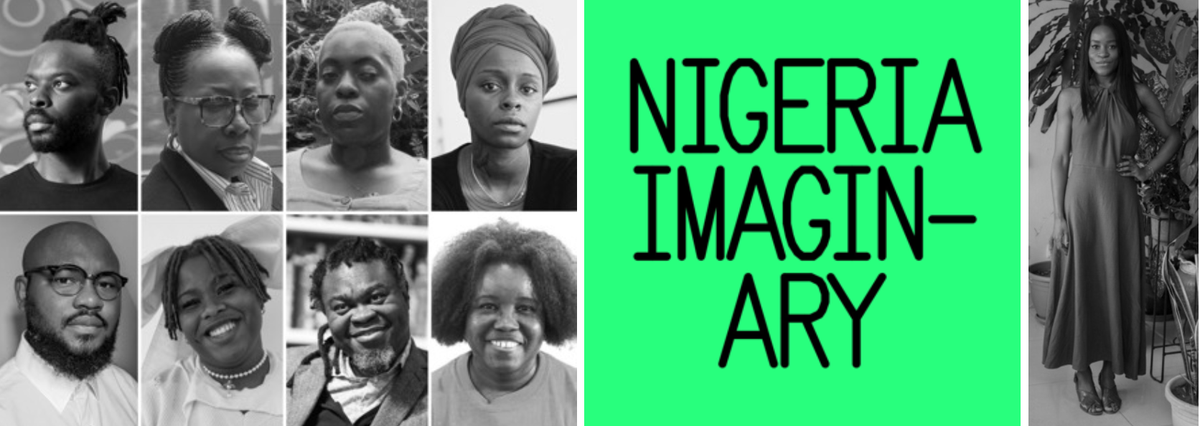Further details of the Nigerian Pavilion at this year's Venice Biennale— the country's second time participating at the exhibition—have been announced.
The first work visitors to the pavilion will encounter will be a sound installation by the artist Precious Okoyomon, consisting of "a radio tower-turned-instrument", which will transmit the confessions of poets, artists and writers, according to a statement. The pavilion's curator, Aindrea Emelife, who worked with Okoyomon on the piece while in Lagos, tells The Art Newspaper that the recordings come from a “confessions booth” that members of the Nigerian arts community as well as “everyday voices” were invited to interact with. “The questions Precious asked were designed to be revealing,” Emelife says—touching upon the dreams of the participants as well as real life.
Ndidi Dike’s two-part work on the 2020 End Sars uprising takes inspiration from how young people in the country “used the tools of the future, social media included, to galvanise Nigerians around the promise of gender equality, education, financial freedom, political representation, and other demands for social justice,” she tells The Art Newspaper.
The End Sars uprising began in Nigeria with mass protests against the Special Anti-Robbery Squad (Sars)—a special unit of the Nigerian police with a noted record for police brutality. On 20 October 2020, at least 12 protesters were shot dead by the Nigerian army at Lekki toll gate in Lagos. Speaking to the Nigerian Imaginary theme, Dike adds: “In making their demands, the youth of Nigeria advocated for a future on their own terms and established an unprecedented coalition that avoided the ethnic divisions that had plagued the nation since its founding. Recognizing the failings of the tools used by an older generation that only sow rancor, the youth of the movement, whether Igbo, Yoruba, Efik, Delta, Binior Hausa, chose to unite under their cause and mission. Ethnicity was irrelevant”. Her piece will also look at how the movement “intersects with global movements”.
Other works include a sculptural installation by Yinka Shonibare “based on the majestic, historic artworks created in the Kingdom of Benin and subsequently looted by British forces in the Benin Expedition of 1897”, a statement says. Fatimah Tuggar will employ augmented reality, artificial intelligence and animatronics to look at the erosion of vernacular Hausa architecture. Onyeka Igwe will extend her contemplation of colonialist legacies with “a three-part audio visual series”. Abraham Onoriode Oghobase will also look at colonial period through the complications surrounding the objectivity and authority of its written and photographic records. Oghobase’s work draws “parallels between the mining of the landscape and the exploitation of labour". Finally, work from Toyin Ojih Odutola will look at the Mbari house—a sacred art form indigenous to the Igbo people—which Ojih Odutola will present as a “center of creative exuberance in post-independence Nigeria”.
Within the pavilion will also be a space called “The Nigeria Imaginary Colloquium” where objects from both country’s present-day and historic past will be exhibited. Other auxiliary projects include the presentation of “The Nigeria Imaginary Incubator Project”, which was realised last year by the Museum of West African Art (MOWAA) and Emelife (who is a curator of Modern and contemporary at the institution) at the ART X Lagos fair and the Benin cultural festival EdoFest. Visitors to both these events were invited to record answers to questions such as: “What does Nigeria taste like? What song reminds you of your grandmother? What childhood memory would you like to relive? How did you get to school? What does Nigeria look like in 2050?” the statement says. The work will be available to listen to on the newly-launched Nigerian Pavilion website (which takes its name from the pavilion, Nigerian Imaginary).
It has been announced that the Nigerian pavilion will be mainly funded by Qatar Museums. Major support from private individuals including lawyer Gbenga Oyebode, financial executive Tope Lawani, and director of MOWAA Phillip Ihenacho will also help the organisers to present the pavilion. Additional support will be given from companies working in art and beyond, including Christie’s, The Christian Levett Collection, Kuramo Capital Management, Afrinvest, Art X Lagos, according to a statement. Support from commercial galleries representing the exhibiting artists has also been accepted, including Goodman, Stephen Friedman, James Cohan, Cristea Roberts, Jack Shainman, White Cube, Corvi-Mora.
The pavilion has been commissioned by the Godwin Obaseki, governor of Nigeria’s Edo State, on behalf of Nigeria’s Federal Ministry of Art, Culture and the Creative Economy, with MOWAA as its official organiser.


